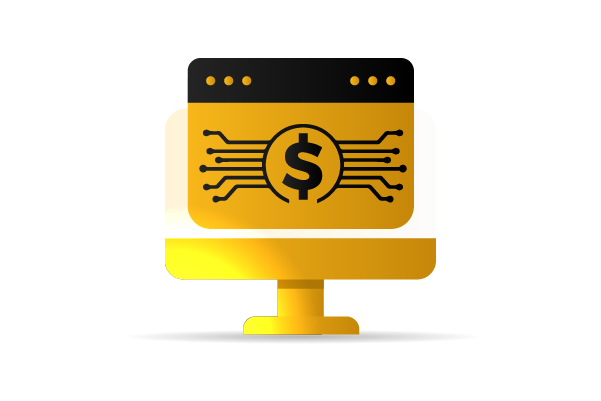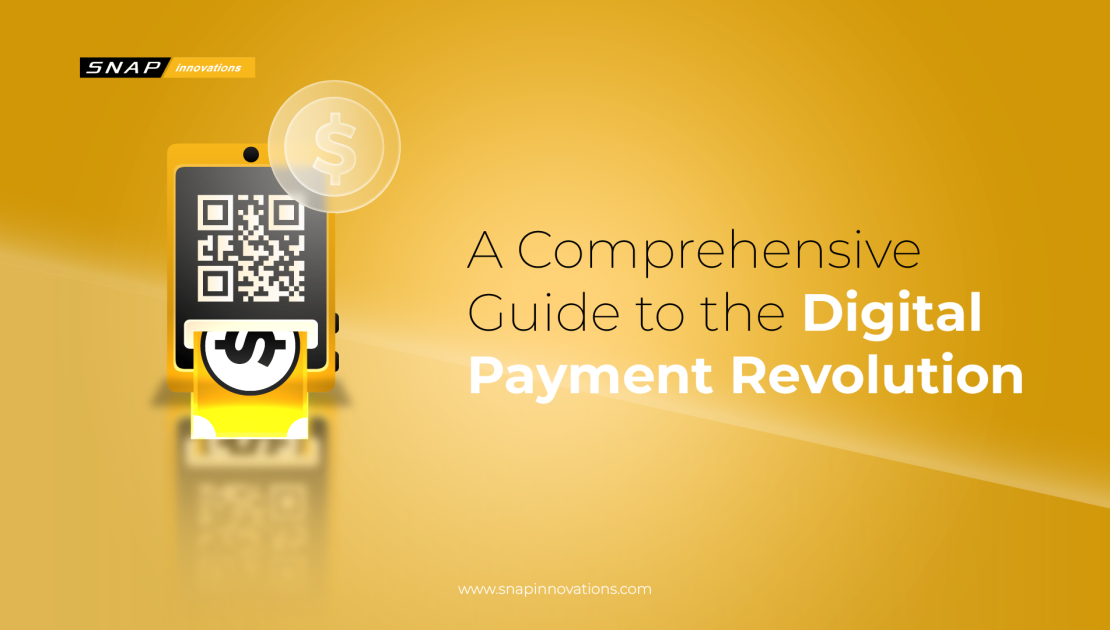The advent of digital payments has transformed the way transactions are conducted across the globe, offering a blend of convenience, speed, and security. This technology encompasses various methods of making payments electronically, bypassing the traditional reliance on physical cash and checks. From mobile payments and online banking to cryptocurrencies and digital wallets, the spectrum of digital payment solutions is broad, catering to diverse consumer needs and preferences.
The rise of digital payments is closely tied to the proliferation of the internet and mobile devices, making it possible for people to send and receive money with just a few clicks. This has significant implications for consumers, businesses, and the economy as a whole, fostering greater financial inclusion and accessibility. It is not merely a technical evolution but a cultural shift towards a more integrated and efficient financial ecosystem.
In this article, we will explore how digital payments function, their benefits, the current trends shaping the market, the challenges that remain, and what the future may hold for this dynamic industry. By understanding the mechanisms and advantages of digital payments, consumers can better navigate this modern financial landscape, leveraging the technology to enhance their daily lives.
How Digital Payments Work?
 Understanding the inner workings of digital payments reveals a complex system made accessible through streamlined user interfaces. Here’s a deeper look into the step-by-step process that allows digital payments to function efficiently:
Understanding the inner workings of digital payments reveals a complex system made accessible through streamlined user interfaces. Here’s a deeper look into the step-by-step process that allows digital payments to function efficiently:
- User Initiation: The digital payment process begins with the user initiating a transaction. This can be done via various digital interfaces such as mobile apps, online banking portals, or even through voice commands on smart devices. The user inputs or selects the recipient’s payment details, which might include a phone number, email address, or bank account information, and specifies the amount to be transferred.
- Payment Gateway: Once the transaction is initiated, the payment details are securely transmitted to a payment gateway. This technology acts as a mediator between the consumer and the financial institutions, ensuring the transaction data is transferred securely. The payment gateway employs advanced encryption protocols to safeguard sensitive information from cyber threats.
- Transaction Authentication: The transaction request is then forwarded to the payer’s bank or financial institution for authentication. This step verifies that the payer has sufficient funds and that their payment method is valid. For credit card transactions, this involves an authorization check by the card issuing bank.
- Order Processing: Upon successful authentication, the payment gateway routes the transaction to the recipient’s bank or payment service. If the transaction involves credit, such as a credit card, the payment processor will settle the transaction by transferring the authorized funds from the credit card issuer to the merchant’s account.
- Confirmation and Settlement: Both parties receive a confirmation that the transaction has been processed. The funds are then settled in the recipient’s account, a process that can be instantaneous or might take a few business days, depending on the payment method and the involved institutions.
- Reconciliation: After the transaction is complete, the involved financial institutions update their records. This reconciliation process is crucial for maintaining accurate financial statements and is automated in most digital payment systems. Users can typically view these transactions in real-time via their digital banking interfaces.
- Security Measures: Throughout the process, various security measures are employed to protect the integrity of the transaction. These include fraud detection algorithms, continuous monitoring for suspicious activity, and compliance checks against regulatory requirements. In the event of any discrepancies, transactions may be halted for further investigation, adding an additional layer of security.
- User Feedback: Many digital payment systems also include mechanisms for user feedback, allowing consumers to report any issues or confirm receipt of services or goods. This feedback loop is essential for improving the service and building trust between consumers and service providers.
Benefits of Digital Payments
Digital payments revolutionize the way transactions are handled, offering a suite of advantages that cater to both individual consumers and businesses. Here’s an expanded look at these benefits:
Convenience
Digital payments streamline financial transactions, making them easier and quicker. Unlike traditional banking, which often requires physical visits and is bound by operational hours, digital platforms enable payments 24/7 from anywhere in the world. This is particularly advantageous for people who travel frequently or live in areas with limited banking infrastructure.
More: Investor Relations in the Digital Age: Strategies, Technologies, and Best Practices
Speed
Transactions via digital methods are significantly faster than traditional means. While a wire transfer or check might take days to process, digital payments can be settled almost instantaneously. This rapid processing time is crucial in today’s fast-paced world, where timely payments can be critical to personal financial management and business operations.
Security
With advancements in cybersecurity, digital payments are becoming increasingly secure. Technologies such as encryption, tokenization, and multi-factor authentication protect users’ financial data from cyber threats. Additionally, in the event of a lost or stolen credit card, digital payment platforms allow for immediate blocking of transactions, which is not as swiftly manageable with cash.
Reduced Costs
By eliminating the need for physical banking materials and reducing transaction fees, digital payments can offer a cost-effective alternative for users. Businesses benefit from lower transaction fees compared to traditional credit card and banking charges. Additionally, digital transaction records simplify accounting processes, reducing costs related to bookkeeping and financial audits.
Accessibility
Digital payment systems have the unique advantage of extending financial services to underbanked or unbanked populations. Mobile payment solutions, for example, only require access to a basic smartphone, which is increasingly common even in less developed regions. This accessibility helps in fostering financial inclusion, giving more people the ability to engage in commerce and improve their economic circumstances.
Efficiency
For businesses, transitioning to digital payments can lead to greater efficiency. Automated payment systems streamline workflows by integrating transaction records with accounting software, thus reducing manual data entry and minimizing errors. This automation not only saves time but also enhances financial accuracy and decision-making.
Environmental Impact
Digital payments contribute to environmental conservation by reducing the need for physical currency production, which involves paper, metals, and other materials. The shift to digital formats also decreases the carbon footprint associated with transporting and processing these materials.
Enhanced Customer Experience
Many digital payment platforms provide user-friendly interfaces and features like transaction history, budgeting tools, and instant receipts, enhancing the overall customer experience. For businesses, offering multiple payment options caters to customer preferences and can increase customer satisfaction and loyalty.
Global Reach
Digital payments break down geographical barriers, enabling global business operations. They allow merchants to accept payments from customers around the world, thus expanding their market reach. This global accessibility is also beneficial for individuals who need to make international transfers or payments.
Traceability
Unlike cash transactions, which can be difficult to trace, digital payments provide a clear audit trail. This traceability is beneficial for budget management and financial planning for individuals, while businesses can easily track spending, manage finances, and comply with regulatory requirements.
Current Trends in the Digital Payment Market
 The digital payment market is continuously evolving, driven by technological advancements, changing consumer behaviors, and regulatory shifts. One prominent trend is the rise of mobile payments, with smartphones becoming increasingly central in our financial transactions. Apps like Apple Pay and Google Wallet allow consumers to store payment details securely and make purchases effortlessly. Similarly, peer-to-peer payment systems such as PayPal, Venmo, and Zelle have transformed personal finance by enabling instant, often fee-free transfers between individuals.
The digital payment market is continuously evolving, driven by technological advancements, changing consumer behaviors, and regulatory shifts. One prominent trend is the rise of mobile payments, with smartphones becoming increasingly central in our financial transactions. Apps like Apple Pay and Google Wallet allow consumers to store payment details securely and make purchases effortlessly. Similarly, peer-to-peer payment systems such as PayPal, Venmo, and Zelle have transformed personal finance by enabling instant, often fee-free transfers between individuals.
Artificial Intelligence (AI) is another major influencer, increasingly integrated into digital payment systems to enhance fraud detection, risk assessment, and customer interaction. AI-powered chatbots and tools offer round-the-clock assistance and personalize the user experience, thus improving both security and satisfaction. The adoption of blockchain technology and cryptocurrencies like Bitcoin and Ethereum also continues to grow, especially in online and cross-border transactions, due to their enhanced transparency and security features.
Moreover, regulatory bodies worldwide are tightening security and privacy standards to protect consumer financial data and prevent fraud, pushing companies towards adopting stringent security measures. Lastly, the COVID-19 pandemic has significantly boosted the use of contactless payments, which employ NFC (Near Field Communication) technology to enable safer, contact-free transactions. This shift towards contactless methods highlights a broader move towards more convenient and secure payment options, likely setting the stage for future financial interactions.
Challenges Facing the Digital Payment Industry
 While the digital payment market is burgeoning with opportunities, it also faces a myriad of challenges that can impede progress. One significant issue is security concerns. Despite advancements in encryption and fraud prevention technologies, cyberattacks and data breaches continue to pose serious threats. These incidents can undermine consumer confidence and deter adoption of digital payment solutions.
While the digital payment market is burgeoning with opportunities, it also faces a myriad of challenges that can impede progress. One significant issue is security concerns. Despite advancements in encryption and fraud prevention technologies, cyberattacks and data breaches continue to pose serious threats. These incidents can undermine consumer confidence and deter adoption of digital payment solutions.
Another major challenge is regulatory compliance. As digital payments become more widespread, governments worldwide are implementing stricter regulations to manage these transactions. Compliance with these evolving standards can be both costly and complex, especially for smaller businesses or startups trying to enter the market.
Interoperability between different payment systems also presents a hurdle. With a multitude of platforms available, ensuring that these systems can work seamlessly together is crucial for providing a smooth user experience. This requires substantial coordination and collaboration among various stakeholders in the financial ecosystem.
Moreover, there is the issue of financial exclusion. While digital payments can increase accessibility, they also risk excluding those without access to necessary technologies or the internet. Addressing this digital divide is essential to ensure that the benefits of digital payments can be universally enjoyed.
Lastly, the reliance on technology means that any downtime or system failures can disrupt transactions and impact both consumers and businesses. Ensuring robust, reliable systems is therefore a critical focus for the industry, requiring ongoing investment and innovation.
Future Outlook for Digital Payments
The future of digital payments looks promising, driven by continuous innovation and an increasing global shift towards digitalization. Several key developments are expected to shape the landscape of digital payments in the coming years.
Firstly, the integration of advanced technologies like blockchain, artificial intelligence (AI), and the Internet of Things (IoT) will likely enhance the efficiency, security, and accessibility of digital payments. Blockchain, for example, offers a decentralized platform that could revolutionize payment security and transparency, potentially reducing fraud and increasing trust among users.
Secondly, as consumer preferences evolve, we will likely see a greater emphasis on user experience and customization in digital payment services. This could involve more personalized payment solutions tailored to individual needs and preferences, facilitated by AI and big data analytics.
Read Next: 7 best algo trading strategy in 2024
Moreover, regulatory frameworks are expected to develop further, keeping pace with technological advancements. This will ensure a safer digital payment environment but may also pose challenges for compliance and innovation. Balancing innovation with regulation will be crucial for sustaining growth in the digital payment sector.
In addition, the expansion of digital payments into less traditional areas such as microtransactions, peer-to-peer lending, and even in governmental services could open new markets and opportunities for growth. As digital infrastructure improves, especially in developing regions, more consumers will likely adopt digital payment methods, further expanding the market.
Finally, the ongoing global challenges like pandemics and economic instability may accelerate the shift from cash to digital payments, as people seek safer, contactless ways of conducting transactions.
Overall, while challenges remain, the potential for growth and innovation in digital payments is substantial, offering exciting possibilities for consumers, businesses, and economies worldwide.
Conclusion
As we have explored, the digital payment market is rapidly evolving, fueled by technological advancements and shifting consumer behaviors. From the convenience and security of mobile and online payments to the innovative applications of blockchain and AI, digital payments are reshaping how financial transactions are conducted globally.
The benefits of digital payments, such as increased accessibility, efficiency, and traceability, are clear. However, the industry must continue to address challenges related to security, regulatory compliance, interoperability, and financial inclusion to fully realize its potential.
Looking ahead, the future of digital payments is bright, with promising developments on the horizon that could further enhance the security, efficiency, and convenience of these systems. As the market continues to grow and evolve, it will undoubtedly offer new opportunities and solutions that will influence not only financial transactions but also the broader economic landscape.
In conclusion, whether for the individual consumer, the business owner, or the economy at large, the digital payment market represents a significant step forward in the pursuit of a more interconnected and efficient global financial system.

